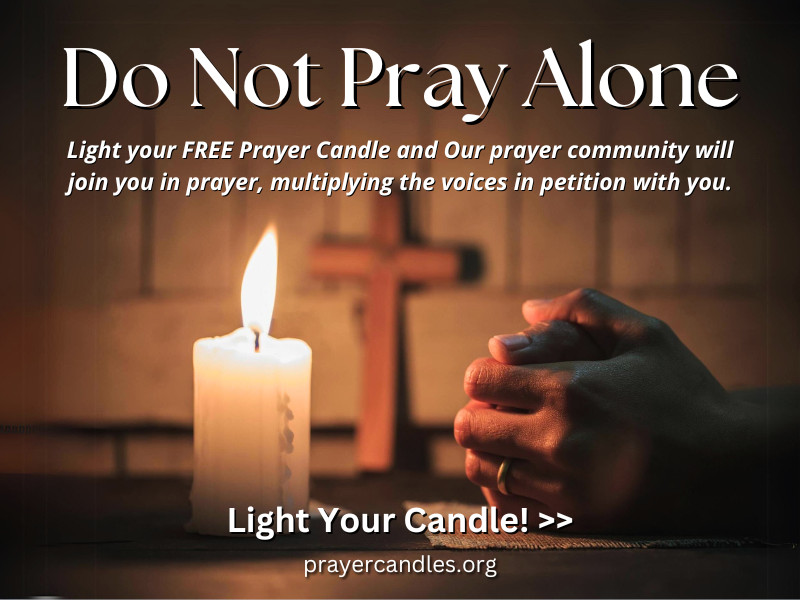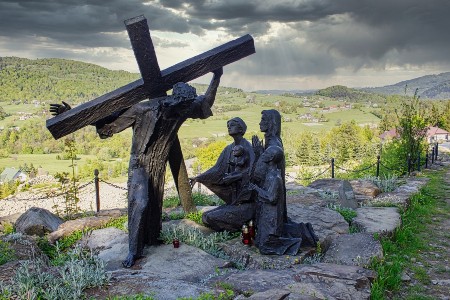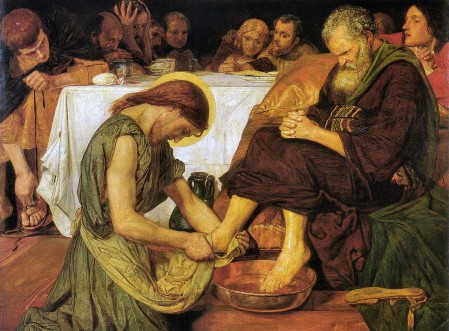 Dear readers, Catholic Online was de-platformed by Shopify for our pro-life beliefs. They shut down our Catholic Online, Catholic Online School, Prayer Candles, and Catholic Online Learning Resources—essential faith tools serving over 1.4 million students and millions of families worldwide. Our founders, now in their 70's, just gave their entire life savings to protect this mission. But fewer than 2% of readers donate. If everyone gave just $5, the cost of a coffee, we could rebuild stronger and keep Catholic education free for all. Stand with us in faith. Thank you. Help Now >
Dear readers, Catholic Online was de-platformed by Shopify for our pro-life beliefs. They shut down our Catholic Online, Catholic Online School, Prayer Candles, and Catholic Online Learning Resources—essential faith tools serving over 1.4 million students and millions of families worldwide. Our founders, now in their 70's, just gave their entire life savings to protect this mission. But fewer than 2% of readers donate. If everyone gave just $5, the cost of a coffee, we could rebuild stronger and keep Catholic education free for all. Stand with us in faith. Thank you. Help Now >
Galilee
FREE Catholic Classes
( Septuagint and New Testament Galilaia ).
The native land of Jesus Christ, where He began His ministry and performed many of His works, and whence He drew His Apostles. Orginally, the Hebrew Gâlîl , derived from gâlal , "to roll", meant a circle or district, and in its feminine and plural forms was applied indifferently to several regions in Palestine. The simple term Gâlîl (Galilee) occurs first in Jos., xx, 7 (cf. Joshua 21:32 ; and 1 Chronicles 6:76 ) where it denotes that portion of Nephtali lying to the northeast of Lake Merom, in which lay Cedes, one of the six cities of refuge. In 1 Kings 9:11 , the expression "land of Galilee" is used to designate the northern part of Palestine, that embraced the twenty cities given by Solomon to Hiram, King of Tyre. Isaias (ix, 1) gives to "the land of Zabulon, and the land of Nephtali " the name "Galilee of the Nations" (D.V. "Galilee of the Gentiles"), undoubtedly on account of the large Gentile population in that region. As early as the Machabean period, the limits of Galilee had extended to Samaria ( 1 Maccabees 10:30 ), without however including the plain of Jezrael and the territory of Ptolemais ( 1 Maccabees 12:47, 49 ). The New Testament frequently recognizes it as dividing, with the provinces of Samaria and Judea, all of Western Palestine. Josephus and, more accurately, the Talmudists (cf. Neubauer, "La Géographie du Talmud ", Paris, 1868) give its boundaries at this period, as Phoenicia and Coele-Syria on the north; the Jordan valley on the east; Samaria, having En Gannim (modern Jennin) at its frontier, on the south; the Mediterranean and Phoenicia on the west. The territory thus described is naturally divided by a high ridge, at the eastern extremity of which was Caphar Hanan ( Kefr 'Anân ), into Upper Galilee, embracing ancient Nephtali and the northern part of Asher, and Lower Galilee, embracing ancient Zabulon and parts of Asher and Issachar. Although mountain ranges extend throughout the territory, rising to a height of 4000 feet in Upper, and to 1800 feet in Lower Galilee, the land is very productive, especially in the southern division where the valleys and plains are greater, and is capable of sustaining a very large population.
Josue (xix, 10-39) names 69 important Canaanite towns and cities, existing in the conquered territory allotted to the Hebrew tribes of Nephtali, Zabulon, Asher, and Issachar. Josephus ( Vita , 45) counted 204 prosperous villages and 15 fortified cities in the Galilee of his time. Now its population is small, and for the most part scattered among miserable villages and mud hamlets. Safed, one of the four sacred cities of Palestine revered by Jews, which has a population of about 15,000, of whom 9000 are Jews, is the principal city in the north. Nazareth, a Christian city (about 10,000), is the chief city in the south. The deportation of Jews by Theglathphalasar (Tiglath-Pileser), 734 B. C., gave an overwhelming predominance to the Gentile elements noted in the population by Isaias. Although the Jews multiplied rapidly in Galilee after the Babylonian exile, they were oppressed by the heathen as late as the Machabean period ( 1 Maccabees 5:45-54 ), and did not prevail until the first century before Christ. As results of their long intercourse with the conquered Canaanites, and Phoenician, Syrian, and Greek immigrants, and their separation from their brethren in Judea by interlying Samaria, they spoke a dialect and had peculiarities in business, family and religious customs, that brought upon them the contempt of the inhabitants of Jerusalem. Under the Roman Empire both Christianity and Judaism flourished there, as is evidenced by the ruins of numerous synagogues, churches, and monasteries belonging to that period that were destroyed by the Moslems. There are also notable ruins of churches and monasteries erected by the Crusaders, who restored Christianity in Palestine in the twelfth century, and were not finally overcome until 1291, when Acre in Galilee, their last stronghold, was taken by the Moslems. The territory is now a Turkish possession belonging to the vilayet of Beirut. The people are divided in their religious beliefs. Catholics of the Latin, Greek, and Maronite Rites, Orthodox Greeks, and Druses live side by side with Moslems. Near Safed there are several modern Jewish colonies.
Join the Movement
When you sign up below, you don't just join an email list - you're joining an entire movement for Free world class Catholic education.
-

-
Mysteries of the Rosary
-
St. Faustina Kowalska
-
Litany of the Blessed Virgin Mary
-
Saint of the Day for Wednesday, Oct 4th, 2023
-
Popular Saints
-
St. Francis of Assisi
-
Bible
-
Female / Women Saints
-
7 Morning Prayers you need to get your day started with God
-
Litany of the Blessed Virgin Mary
Daily Catholic
 Daily Readings for Thursday, November 21, 2024
Daily Readings for Thursday, November 21, 2024 St. Gelasius: Saint of the Day for Thursday, November 21, 2024
St. Gelasius: Saint of the Day for Thursday, November 21, 2024 Act of Consecration to the Holy Spirit: Prayer of the Day for Thursday, November 21, 2024
Act of Consecration to the Holy Spirit: Prayer of the Day for Thursday, November 21, 2024- Daily Readings for Wednesday, November 20, 2024
- St. Edmund Rich: Saint of the Day for Wednesday, November 20, 2024
- Act of Adoration: Prayer of the Day for Wednesday, November 20, 2024
![]()
Copyright 2024 Catholic Online. All materials contained on this site, whether written, audible or visual are the exclusive property of Catholic Online and are protected under U.S. and International copyright laws, © Copyright 2024 Catholic Online. Any unauthorized use, without prior written consent of Catholic Online is strictly forbidden and prohibited.
Catholic Online is a Project of Your Catholic Voice Foundation, a Not-for-Profit Corporation. Your Catholic Voice Foundation has been granted a recognition of tax exemption under Section 501(c)(3) of the Internal Revenue Code. Federal Tax Identification Number: 81-0596847. Your gift is tax-deductible as allowed by law.






 Daily Readings for Thursday, November 21, 2024
Daily Readings for Thursday, November 21, 2024 St. Gelasius: Saint of the Day for Thursday, November 21, 2024
St. Gelasius: Saint of the Day for Thursday, November 21, 2024 Act of Consecration to the Holy Spirit: Prayer of the Day for Thursday, November 21, 2024
Act of Consecration to the Holy Spirit: Prayer of the Day for Thursday, November 21, 2024

